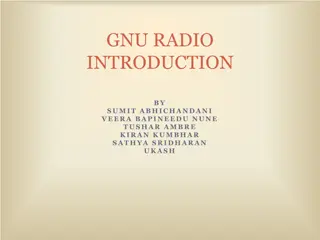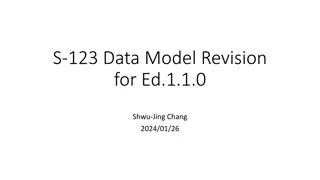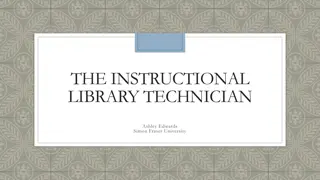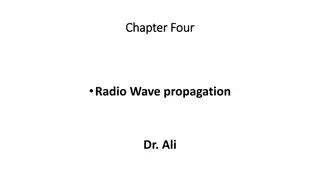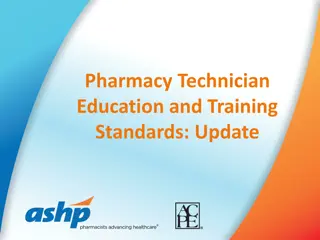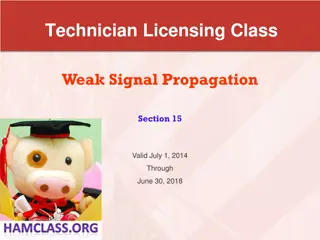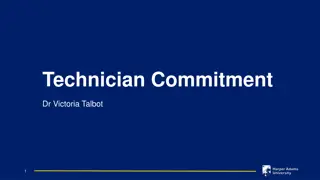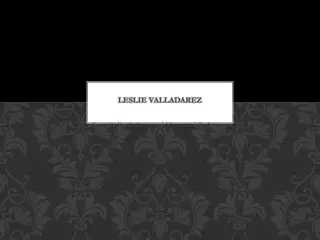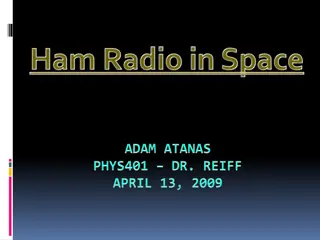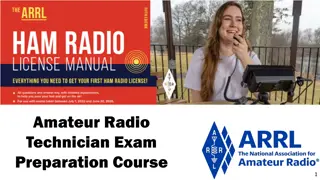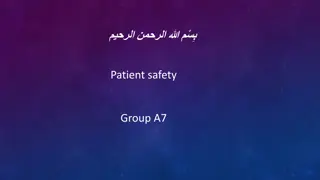Ham Radio Technician Class Study Tips and Practice Questions
Enhance your preparation for the Ham Radio Technician Class exam with study hints and practice questions on operating procedures, station operations, and more. Tips include reading questions carefully, reviewing band plans, and utilizing color codes for better retention. Stay focused on getting the most questions correct to pass the exam successfully.
Download Presentation

Please find below an Image/Link to download the presentation.
The content on the website is provided AS IS for your information and personal use only. It may not be sold, licensed, or shared on other websites without obtaining consent from the author.If you encounter any issues during the download, it is possible that the publisher has removed the file from their server.
You are allowed to download the files provided on this website for personal or commercial use, subject to the condition that they are used lawfully. All files are the property of their respective owners.
The content on the website is provided AS IS for your information and personal use only. It may not be sold, licensed, or shared on other websites without obtaining consent from the author.
E N D
Presentation Transcript
Hi-Landers Ham Class Instructed by Rich Bugarin W6EC
Ham Radio Technician Class Exam preparation Power Point created by Rich Bugarin W6EC. Effective July 1, 2022 and is valid until June 30, 2026. Please send suggested changes to this presentation to: w6ec@thebugarins.com
Study Hints I suggest you read each question and only the correct answer. Read through the complete question pool at least three times before you attempt taking a practice exams. For higher impact and better results read the correct answer first then the question and again the correct answer. The key to passing the exam is to get the most questions correct using the above method the correct response will often jump out at you on test day even if you don t remember the question.
Text Color Black: Original/Official questions and information in original format (unaltered). Red: Original information text color simply changed to highlight subject. Blue: Notes and information added by Rich (W6EC).
SUBELEMENT T2 - Operating Procedures [3 Exam Questions - 3 Groups]
T2A - Station operation: choosing an operating frequency, calling another station, test transmissions; Band plans: calling frequencies, repeater offsets #7 of 35
T2A01 What is a common repeater frequency offset in the 2 meter band? A. Plus or minus 5 MHz B. Plus or minus 600 kHz C. Plus or minus 500 kHz D. Plus or minus 1 MHz
T2A01 What is a common repeater frequency offset in the 2 meter band? A. Plus or minus 5 MHz B. Plus or minus 600 kHz C. Plus or minus 500 kHz D. Plus or minus 1 MHz
T2A02 What is the national calling frequency for FM simplex operations in the 2 meter band? A. 146.520 MHz B. 145.000 MHz C. 432.100 MHz D. 446.000 MHz
T2A02 What is the national calling frequency for FM simplex operations in the 2 meter band? A. 146.520 MHz B. 145.000 MHz C. 432.100 MHz D. 446.000 MHz
T2A03 What is a common repeater frequency offset in the 70 cm band? A. Plus or minus 5 MHz B. Plus or minus 600 kHz C. Plus or minus 500 kHz D. Plus or minus 1 MHz
T2A03 What is a common repeater frequency offset in the 70 cm band? A. Plus or minus 5 MHz B. Plus or minus 600 kHz C. Plus or minus 500 kHz D. Plus or minus 1 MHz
T2A04 What is an appropriate way to call another station on a repeater if you know the other station's call sign? A. Say "break, break," then say the station's call sign B. Say the station's call sign, then identify with your call sign C. Say "CQ" three times, then the other station's call sign D. Wait for the station to call CQ, then answer
T2A04 What is an appropriate way to call another station on a repeater if you know the other station's call sign? A. Say "break, break," then say the station's call sign B. Say the station's call sign, then identify with your call sign C. Say "CQ" three times, then the other station's call sign D. Wait for the station to call CQ, then answer
T2A05 How should you respond to a station calling CQ? A. Transmit "CQ" followed by the other station s call sign B. Transmit your call sign followed by the other station s call sign C. Transmit the other station s call sign followed by your call sign D. Transmit a signal report followed by your call sign
T2A05 How should you respond to a station calling CQ? A. Transmit "CQ" followed by the other station s call sign B. Transmit your call sign followed by the other station s call sign C. Transmit the other station s call sign followed by your call sign D. Transmit a signal report followed by your call sign
T2A06 Which of the following is required when making on- the-air test transmissions? A. Identify the transmitting station B. Conduct tests only between 10 p.m. and 6 a.m. local time C. Notify the FCC of the transmissions D. All these choices are correct
T2A06 Which of the following is required when making on- the-air test transmissions? A. Identify the transmitting station B. Conduct tests only between 10 p.m. and 6 a.m. local time C. Notify the FCC of the transmissions D. All these choices are correct
T2A07 What is meant by "repeater offset ? A. The difference between a repeater s transmit and receive frequencies B. The repeater has a time delay to prevent interference C. The repeater station identification is done on a separate frequency D. The number of simultaneous transmit frequencies used by a repeater
T2A07 What is meant by "repeater offset ? A. The difference between a repeater s transmit and receive frequencies B. The repeater has a time delay to prevent interference C. The repeater station identification is done on a separate frequency D. The number of simultaneous transmit frequencies used by a repeater
T2A08 What is the meaning of the procedural signal CQ ? A. Call on the quarter hour B. Test transmission, no reply expected C. Only the called station should transmit D. Calling any station
T2A08 What is the meaning of the procedural signal CQ ? A. Call on the quarter hour B. Test transmission, no reply expected C. Only the called station should transmit D. Calling any station
T2A09 Which of the following indicates that a station is listening on a repeater and looking for a contact? A. CQ CQ followed by the repeater s call sign B. The station s call sign followed by the word monitoring C. The repeater call sign followed by the station s call sign D. QSY followed by your call sign
T2A09 Which of the following indicates that a station is listening on a repeater and looking for a contact? A. CQ CQ followed by the repeater s call sign B. The station s call sign followed by the word monitoring C. The repeater call sign followed by the station s call sign D. QSY followed by your call sign
T2A10 What is a band plan, beyond the privileges established by the FCC? A. A voluntary guideline for using different modes or activities within an amateur band B. A list of operating schedules C. A list of available net frequencies D. A plan devised by a club to indicate frequency band usage
T2A10 What is a band plan, beyond the privileges established by the FCC? A. A voluntary guideline for using different modes or activities within an amateur band B. A list of operating schedules C. A list of available net frequencies D. A plan devised by a club to indicate frequency band usage
T2A11 What term describes an amateur station that is transmitting and receiving on the same frequency? A. Full duplex B. Diplex C. Simplex D. Multiplex
T2A11 What term describes an amateur station that is transmitting and receiving on the same frequency? A. Full duplex B. Diplex C. Simplex D. Multiplex
T2A12 What should you do before calling CQ? A. Listen first to be sure that no one else is using the frequency B. Ask if the frequency is in use C. Make sure you are authorized to use that frequency D. All these choices are correct
T2A12 What should you do before calling CQ? A. Listen first to be sure that no one else is using the frequency B. Ask if the frequency is in use C. Make sure you are authorized to use that frequency D. All these choices are correct
T2B VHF/UHF operating practices: FM repeater, simplex, reverse splits; Access tones: CTCSS, DTMF; DMR operation; Resolving operational problems; Q signals #8 of 35
T2B01 How is a VHF/UHF transceiver s reverse function used? A. To reduce power output B. To increase power output C. To listen on a repeater s input frequency D. To listen on a repeater s output frequency
T2B01 How is a VHF/UHF transceiver s reverse function used? A. To reduce power output B. To increase power output C. To listen on a repeater s input frequency D. To listen on a repeater s output frequency
T2B02 What term describes the use of a sub-audible tone transmitted along with normal voice audio to open the squelch of a receiver? A. Carrier squelch B. Tone burst C. DTMF D. CTCSS
T2B02 What term describes the use of a sub-audible tone transmitted along with normal voice audio to open the squelch of a receiver? A. Carrier squelch B. Tone burst C. DTMF D. CTCSS Continues Tone Controlled Squelch System
T2B03 Which of the following describes a linked repeater network? A. A network of repeaters in which signals received by one repeater are transmitted by all the repeaters in the network B. A single repeater with more than one receiver C. Multiple repeaters with the same control operator D. A system of repeaters linked by APRS
T2B03 Which of the following describes a linked repeater network? A. A network of repeaters in which signals received by one repeater are transmitted by all the repeaters in the network B. A single repeater with more than one receiver C. Multiple repeaters with the same control operator D. A system of repeaters linked by APRS
T2B04 Which of the following could be the reason you are unable to access a repeater whose output you can hear? A. Improper transceiver offset B. You are using the wrong CTCSS tone C. You are using the wrong DCS code D. All these choices are correct
T2B04 Which of the following could be the reason you are unable to access a repeater whose output you can hear? A. Improper transceiver offset B. You are using the wrong CTCSS tone C. You are using the wrong DCS code D. All these choices are correct
T2B05 What would cause your FM transmission audio to be distorted on voice peaks? A. Your repeater offset is inverted B. You need to talk louder C. You are talking too loudly D. Your transmit power is too high
T2B05 What would cause your FM transmission audio to be distorted on voice peaks? A. Your repeater offset is inverted B. You need to talk louder C. You are talking too loudly D. Your transmit power is too high
T2B06 What type of signaling uses pairs of audio tones? A. DTMF B. CTCSS C. GPRS D. D-STAR
T2B06 What type of signaling uses pairs of audio tones? A. DTMF B. CTCSS C. GPRS D. D-STAR These tones are also used to control repeaters linked by the Internet Relay Linking Project (IRLP) protocol Duel Tone Multi Frequency (Proper name for Touch Tone Signals)
T2B07 How can you join a digital repeater s talkgroup ? A. Register your radio with the local FCC office B. Join the repeater owner s club C. Program your radio with the group s ID or code D. Sign your call after the courtesy tone
T2B07 How can you join a digital repeater s talkgroup ? A. Register your radio with the local FCC office B. Join the repeater owner s club C. Program your radio with the group s ID or code D. Sign your call after the courtesy tone
T2B08 Which of the following applies when two stations transmitting on the same frequency interfere with each other? A. The stations should negotiate continued use of the frequency B. Both stations should choose another frequency to avoid conflict C. Interference is inevitable, so no action is required D. Use subaudible tones so both stations can share the frequency
T2B08 Which of the following applies when two stations transmitting on the same frequency interfere with each other? A. The stations should negotiate continued use of the frequency B. Both stations should choose another frequency to avoid conflict C. Interference is inevitable, so no action is required D. Use subaudible tones so both stations can share the frequency
T2B09 Why are simplex channels designated in the VHF/UHF band plans? A. So stations within range of each other can communicate without tying up a repeater B. For contest operation C. For working DX only D. So stations with simple transmitters can access the repeater without automated offset
T2B09 Why are simplex channels designated in the VHF/UHF band plans? A. So stations within range of each other can communicate without tying up a repeater B. For contest operation C. For working DX only D. So stations with simple transmitters can access the repeater without automated offset



